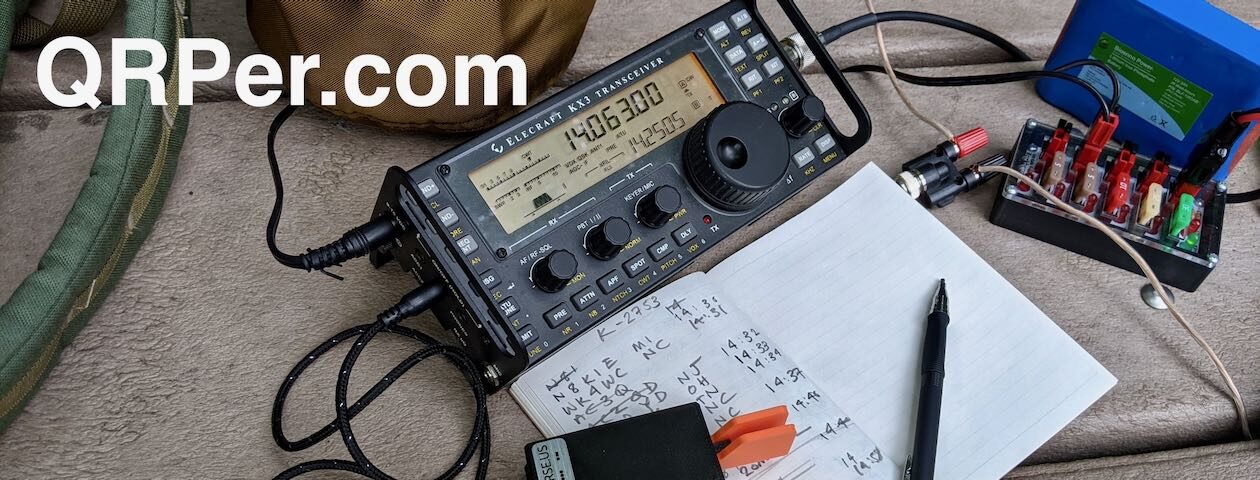Many thanks to Christian (IX1CKN) who shares the following field report:
How the Red Corners uSDR+ Performed on Its First Field Test
by Christian (IX1CKN)
24 QSOs in 104 minutes at 5 watts—how would you rate that? The answer isn’t exactly scientific, as it depends on personal opinions, habits, and the unique propagation conditions during the activation. But in my eyes, as the first test of the “Red Corners” (a.k.a. USDR+), it’s definitely a positive result.
 I wanted the “first time” with my new QRP radio (which has been catching the attention of more and more operators) to be out in the field, so on Thursday, the 29th August 2024, I headed to the Tsatelet Reserve (IT-0120) to contribute to the Parks on the Air (POTA) program.
I wanted the “first time” with my new QRP radio (which has been catching the attention of more and more operators) to be out in the field, so on Thursday, the 29th August 2024, I headed to the Tsatelet Reserve (IT-0120) to contribute to the Parks on the Air (POTA) program.
I have to admit, I had doubts about reaching the 10 contacts needed for validation. I arrived at the site at 15:16 UTC and set up a 1/4-wave vertical antenna on the ground. I decided not to use an external mic, just the built-in one. The setup was then in “walkie-talkie” mode, fitting in one hand, leaving the other free for logging or filming. Conceptually and practically, it was real freedom.
 The first few calls brought in four quick responses, one per minute.
The first few calls brought in four quick responses, one per minute.
Encouraging start, but then it felt like the band “died.” So, I adjusted, searching for stations that were calling in return. I found several, including Roberto (IG9ITO) from Lampedusa Island —always a pleasure to QSO with him—and I also logged Carmelo (IT9ESF) from Messina.
Between calling and moving around to catch other activators spotted on the cluster (thanks to the dual VFO, although you need to navigate through the menu to switch), I managed to increase the contact count to 24 by the end.
Notably, I logged 9 “park-to-park” QSOs, including the longest distance of the day—1820 km to TA1EYE. That’s a rare feat for a single activation. Some colleagues were operating from 2-fer areas, but I prefer to count unique calls, which is still interesting data.
 It’s interesting because it shows that the “Red Corners” has the power to reach operators who, as activators, don’t necessarily have fancy antennas or are dealing with challenging terrain and horizon. It happened 9 times today, so it’s not a coincidence. I’d also like to point out that I didn’t use an external tuner. I noticed that adjusting the vertical whip length allowed for an SWR of 1.2 across the band, which I found acceptable. Plus, it feels like a solid device in hand and looks good sitting on a rock.
It’s interesting because it shows that the “Red Corners” has the power to reach operators who, as activators, don’t necessarily have fancy antennas or are dealing with challenging terrain and horizon. It happened 9 times today, so it’s not a coincidence. I’d also like to point out that I didn’t use an external tuner. I noticed that adjusting the vertical whip length allowed for an SWR of 1.2 across the band, which I found acceptable. Plus, it feels like a solid device in hand and looks good sitting on a rock.
 What else can I add that the video below doesn’t show? The “Red Corners” uSDR, like the Quansheng UV-K5 (another recent “must-have”), has some objective limitations. I won’t rehash them here—there are plenty of posts covering that. This makes it impossible to consider this Chinese QRP rig as a replacement for our shack radios. However, considering its limitations and focusing on portable use, its value for money becomes a strong point and offers an interesting angle.
What else can I add that the video below doesn’t show? The “Red Corners” uSDR, like the Quansheng UV-K5 (another recent “must-have”), has some objective limitations. I won’t rehash them here—there are plenty of posts covering that. This makes it impossible to consider this Chinese QRP rig as a replacement for our shack radios. However, considering its limitations and focusing on portable use, its value for money becomes a strong point and offers an interesting angle.
 The first test went well, but there will be more (I’ll also get the monoband whip, and it will be fun to try pure “walkie-talkie” operations).
The first test went well, but there will be more (I’ll also get the monoband whip, and it will be fun to try pure “walkie-talkie” operations).
73 and thanks, everyone!



























































